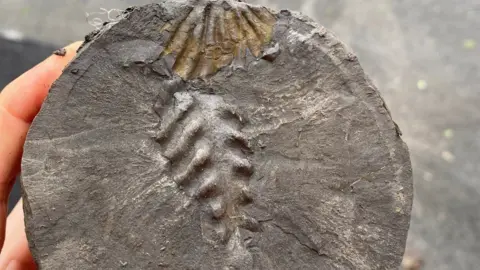Fossil 'treasure trove' found at landslip site
 Isle of Wight Council
Isle of Wight CouncilA "treasure trove" of fossilised creatures have been found after boreholes were drilled following a vast landslip on the Isle of Wight.
The three boreholes reaching down 130m (437ft) on Leeson Road at Bonchurch, near Ventnor, were put in place to house monitoring equipment.
The land fell away on 10 December last year, leaving some homes teetering on the edge of the cliffs.
Isle of Wight Council said the fossils dated back more than 100 million years.
 Isle of Wight Council
Isle of Wight CouncilMost of the fossils from the boreholes were recovered from clay between 30m (98ft) and 90m (295ft) deep.
The council said: "While drilling boreholes to safeguard Leeson Road in Bonchurch for future use, we've stumbled upon a treasure trove of fossils dating back over 100 million years.
"From ammonites to bivalves, these ancient marine creatures reveal secrets from the Lower Cretaceous Period."
Despite the boreholes being 102mm (four inches) in diameter, a few intact and well-preserved fossilised creatures were found complete.
The ground investigation work is being carried out to take core samples of the rock layers at the landslip site that are being assessed and recorded by geotechnical engineers to confirm changes following the landslide.
Isle of Wight Council said the information had been gathered to "develop and maintain an early warning system that will allow reopening of the road when safe but shut immediately if significant movement is detected".
You can follow BBC Hampshire & Isle of Wight on Facebook, X (Twitter), or Instagram.
